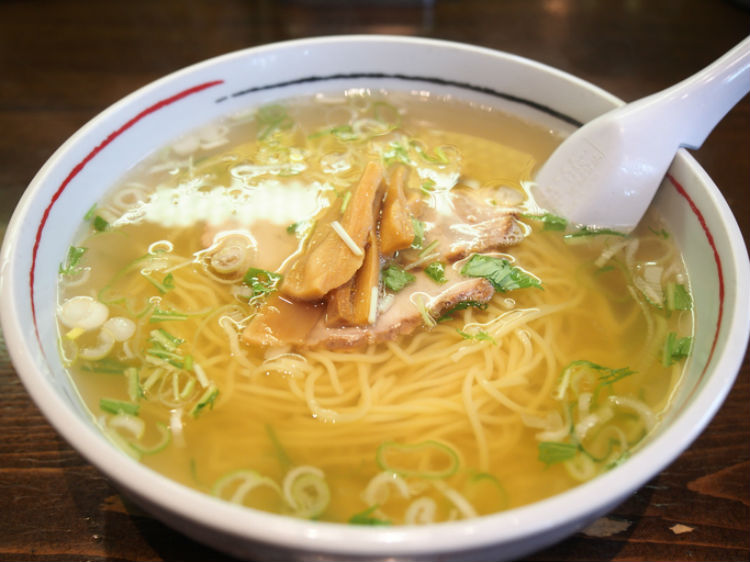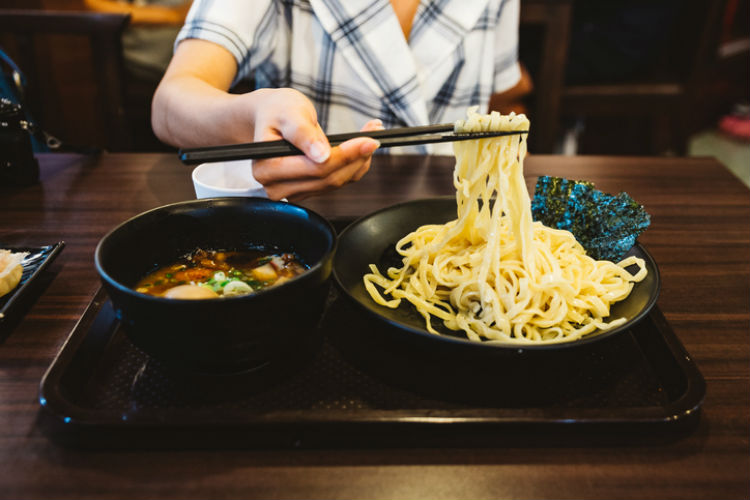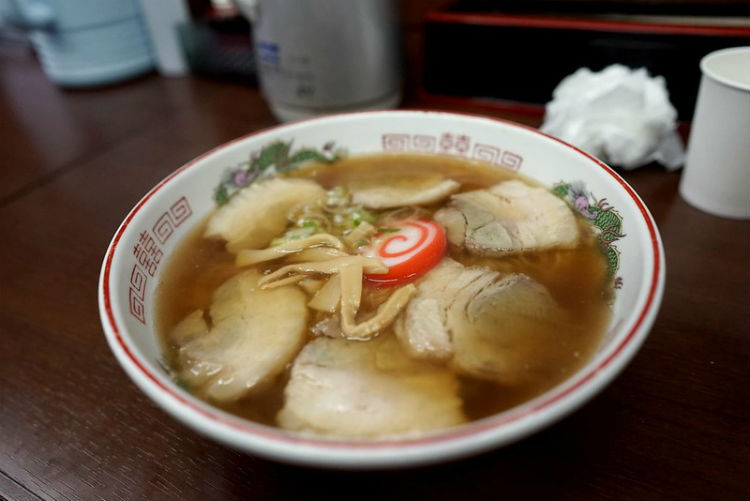Ramen isn’t taken lightly in Japan. It’s a way of life! And that’s the reason why every region or prefecture has its own style of making ramen. These regions from all over the country proudly have their own local versions. They’re called gotouchi ramen, which means “regional ramen”.
Also Read: Taste The Different Kinds of Japanese Ramen According To Their Base Flavour
We have compiled a list of best regional ramen that you simply shouldn’t miss at your next trip to Japan. So, what are you waiting for? SLURRRPPP AWAY:

1Sapporo Ramen (Hokkaido)
Between the many local ramens in Japan, Sapporo ramen from Hokkaido region is the most famous and most adored across the country. It is considered one of the three great ramen of Hokkaido. It consists of a rich thick tonkotsu (pork bone) soup with yellow, curly noodles.
The hearty, rich flavours of the Sapporo ramen is due to its miso base, a knob of butter and seasonal seafood. The ramen is topped with a variety of toppings such as char siu (braised pork), menma (fermented bamboo shoots), scallions and sauteed vegetables such as cabbage, corn, onions, and seasoned bean sprouts.
2Hakodate Ramen (Hokkaido)

Another ramen which falls under the category of three great ramen of Hokkaido region, Hakodate ramen can be distinguished easily due to its clear and light soup. This shio (salt) broth is made from tonkotsu or chicken bones and herbs.
Hakodate ramen usually has straight noodles of medium (or even thin) thickness, which are then topped with preserved menma (bamboo shoots), char siu, leeks, spinach, corn, a sprinkle of spring onions, fu (wheat gluten cakes) and naruto fish cake slices.
3Asahikawa Ramen (Hokkaido)

Let’s end the trilogy of Hokkaido’s finest ramen with a bowl of this soy-based authentic ramen known as the Asahikawa ramen. Designed specifically to stave off the cold, Asahikawa’s shoyu (soy) ramen typically uses a broth made from seafood, pork bones and chicken bones, flavoured with soy sauce. The soup is then served with a characteristic layer of lard floating on top, trapping the heat in and the cold out.
4Tokyo Ramen (Tokyo)

Considered as the ‘original ramen’, Tokyo Ramen typically contains a soup made from pork or chicken bones, soy sauce and moderately thick curly egg noodles. The soy sauce broth gives the soup its recognizably dark colour. This clear, brown soup is usually topped with roast pork (char siu), marinated bamboo shoots, fish cake, spinach, seaweed, kelp, kamaboko, scallions and of course- egg.
5Tsukemen Ramen

If you do not prefer your noodles and soup together, this is the perfect ramen for you! Originated in Tokyo by Kazuo Yamagishi, Tsukemen Ramen is a dish where the noodles and soup are served separately. Bowl of thick ivory noodles is served cold with a separate bowl of toppings in thick hot soup. The soup is often pork-based and heavily seasoned. The idea is to dip the cold noodles in the thick, flavourful sauce. Often, dashi broth is also served with Tsukemen for the guest to dilute the intensity of the sauce.
Also Read: Taste The Different Kinds of Japanese Ramen According To Their Base Flavour
6Takayama Ramen (Gifu)

The local ramen of Takayama city, in Hida area of Gifu Prefecture – Takayama Ramen (also known as Hida ramen) primarily uses chicken bone-based broth, flavoured with bonito flakes, dried sardines, and vegetables simmered in. Unlike the other ramen, Takayama ramen boils its soup (kaeshi) together with the base, resulting in a dark and yet clear shoyu broth with a mild sweetness. The noodles are flat or thin curly noodles, and the bowls are topped with simple toppings such as onions, char siu, menma, local Hida scallions and naruto fish cakes.
7Yokohama Ramen (Kanagawa)

Also known as Ie-kei ramen, Yokohama Ramen uses thicker noodles than most other bowls of ramen served in a soup made from pork, chicken and soy sauce. The dish is generally topped with spinach, char siu, nori seaweed and scallions..
8Hakata Ramen (Kyushu)

Hakata ramen from Hakata district of Fukuoka city in Kyushu is a thick, creamy tonkotsu soup distilled from flavourful pork bones. Popular all over Japan, the Hakata ramen contains thin, firm noodles which are topped with char siu, chewy, crunchy kikurage (also known as the wood-ear or cloud-ear mushroom), pickled mustard greens, pickled ginger, green onions, sesame seeds and crushed garlic.
9Wakayama Ramen or Chuka Soba ( Wakayama)

The Wakayama ramen is also referred to as “Chuka Soba” (Chinese noodles) in Wakayama Prefecture and is largely split into 2 different types based on the soup. While one has a light shoyu soup, the other has a tonkotsu shoyu base. But the main flavour remains shoyu mixed with pork bones. The noodles are thin, straight and are topped with green scallions, menma, char siu and kamaboko (traditional Japanese fish paste product).
10Kitakata Ramen (Fukushima)

Relatively light compared to the ones mentioned above, Kitakata ramen from the Fukushima Prefecture is a gentle, clear, soy-based broth flavoured with pork bones and niboshi (dried sardines). Featuring thick, flat and crimped noodles, this ramen is usually eaten as breakfast in the small town of Kitkata. Ramen is so popular in this region that it is known to have the most ramen establishments in one area.
Have you had any of these regional Ramen before? Which one is your favourite? Tell us all in the comment section below!


